Visit Antwerpen (Anvers) Art Nouveau
More than 100 Art Nouveau
buildings. It is the second town of Belgium (after Brussels) and one of the two more
important
port of Europe.
The town had the reputation of beeing very conservative, in some town
projects,
the architectural style was often mentioned in the command (it was always an historical style and never
Art
Nouveau).
Zurenborg - Cogels Osylei quater
This is the Art Nouveau "golden triangle", a quater defined by
three streets (Cogels Osylei, Waterloo straat and Transvaal straat)
that was built mainly between 1890
and 1906.
The urban planning of Zurenborg and the Cogels Osylei dates from 1894
(and half of the area was built in 1895, which let an important place
for Art Nouveau that began around 1897 in Antwerpen. As An incredible
number of Art Nouveau
buildings are still preserved for your eyes pleasure. It is often
presented as
the most important Art Nouveau quater in Europe and in the world.
| 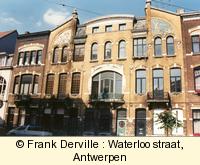
| "Den
Tijd", 59-63, Waterloo straat by Cols & Defever in 1903.
| 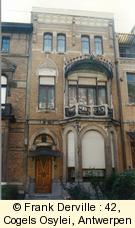
|
| "The waterlilies" by Cols & Defever in
1900. see the nice covered balcony. |
| 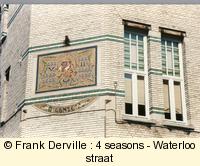
| Villa 4 seasons ("De Vier Seizoenen") by
Joseph Bascourt in 1899 : The 4 symetrical villas corner a cross roads.
Each corner is decorated by a fresco dedicated to a season. Hier the
Spring ("Lenze").
|
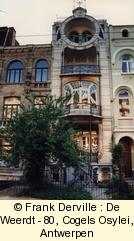
|
| Quinten
Metsys by J de Weerdt in 1904.
Imitates House Ciamberlani by G Strauven in Bruxelles.
|
| 
| Villa
"Lotus" and "Papyrus" by J Bascourt in 1901. |
| Villa
"Sunflower" (Huize Zonnebloem) by Jules Hofman in 1900. The sunflower
is used for the decoration of the façade. Nature and particularly sunflowers
has been used to decorate Art Nouveau buildings. |
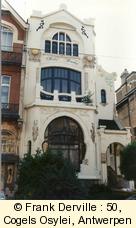
| 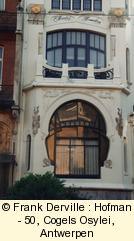
| 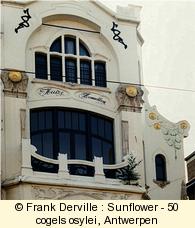 |
Other buildings in Antwerpen
If the Cogels Osylei quater offers a real impressive
homogenous Art Nouveau
quater, ignoring the rest of Antwerpen would be a major mistake (when
Art
Nouveau books dare pointing out Antwerpen, they usely limit it to
Cogels
Osylei). I did not have enough time to visit all I would have like but
the few
pictures I have taken for you below will convince you easily.
Maison du peuple (People
house) by Van Averbeke in 1899-1903. Now transformed in a school. As
for me, it is the greatest Art Nouveau building of Antwerpen. It has a
large mosaic in venitian glass. The structure of the building is made
of wrought iron.
The "Maison du peuple" in Brussel was built
by Horta but was destroyed. |  |
 |
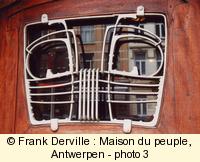
|
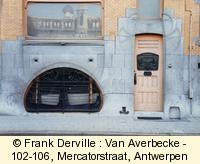 |
Mercatorstraat : another work by van
Averbeke in 1905. Abstract lines and a high quality of every detail.
|
|
The
Five continents, 2, Schilderstraat by Smet Verhas in 1901. The owner
was an
"armateur" which explains the boat shape balcony. There
is also a wonderful iron lamp behind the boat. |
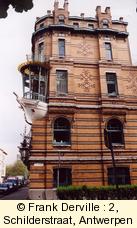
| 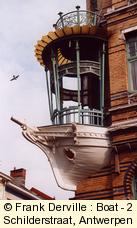
|
| 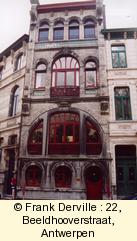
|

|
22, Bleedhooverstraat by W
van Oenen in 1901. The horse shoe shaped windows and door of the ground
floor are both a signature of Art Nouveau and have a singular touch.
The master floor (1st floor) is easily identified with its large bay
window. Few years later, with the genralisation of elevators, the
master floor will move to the last floor. |

 RSS
RSS














